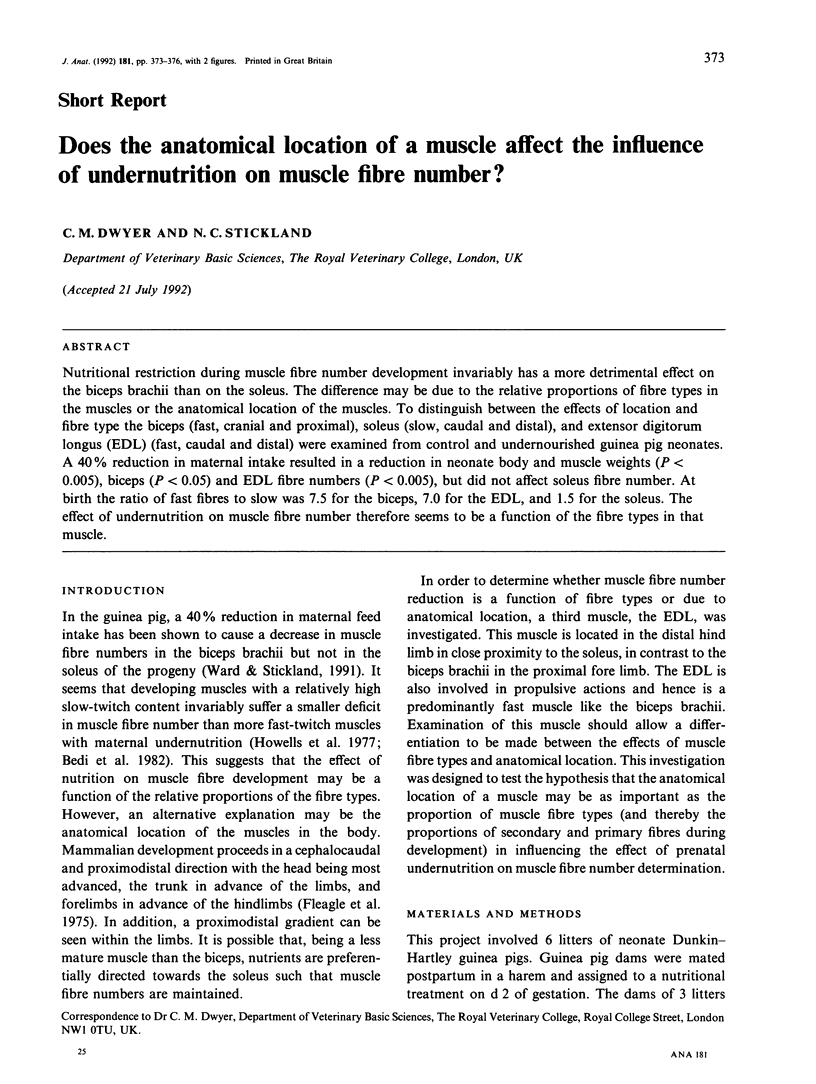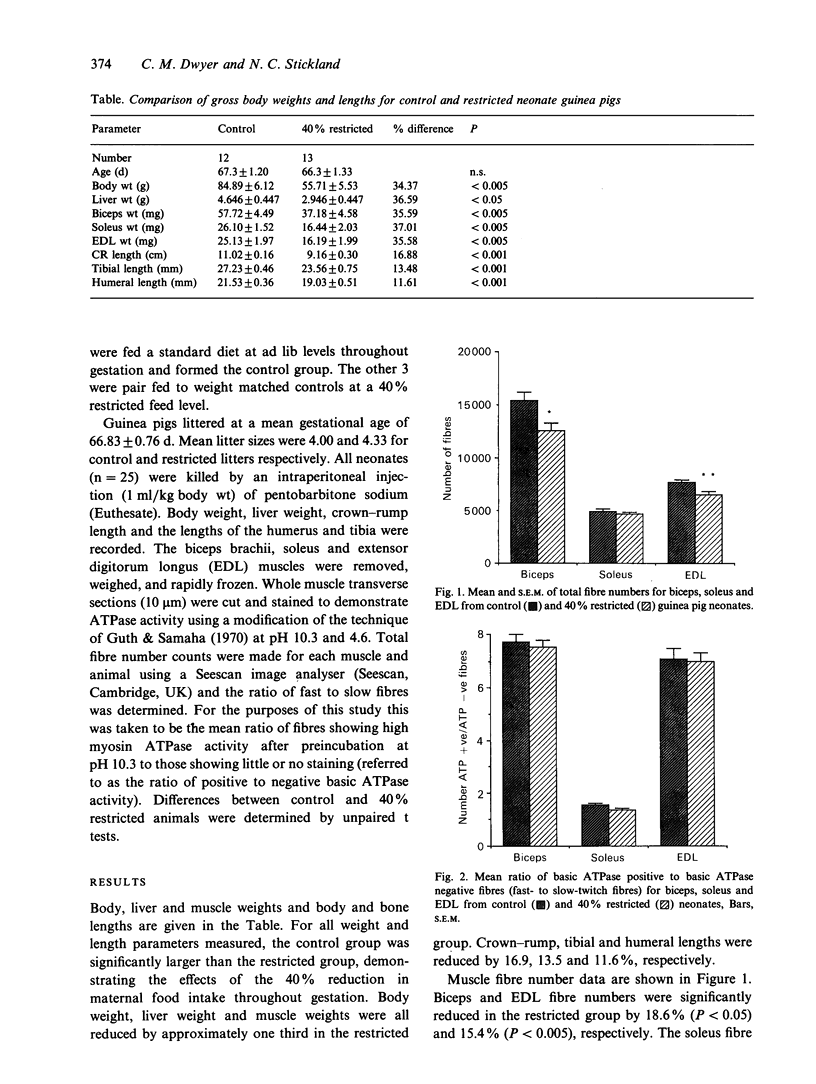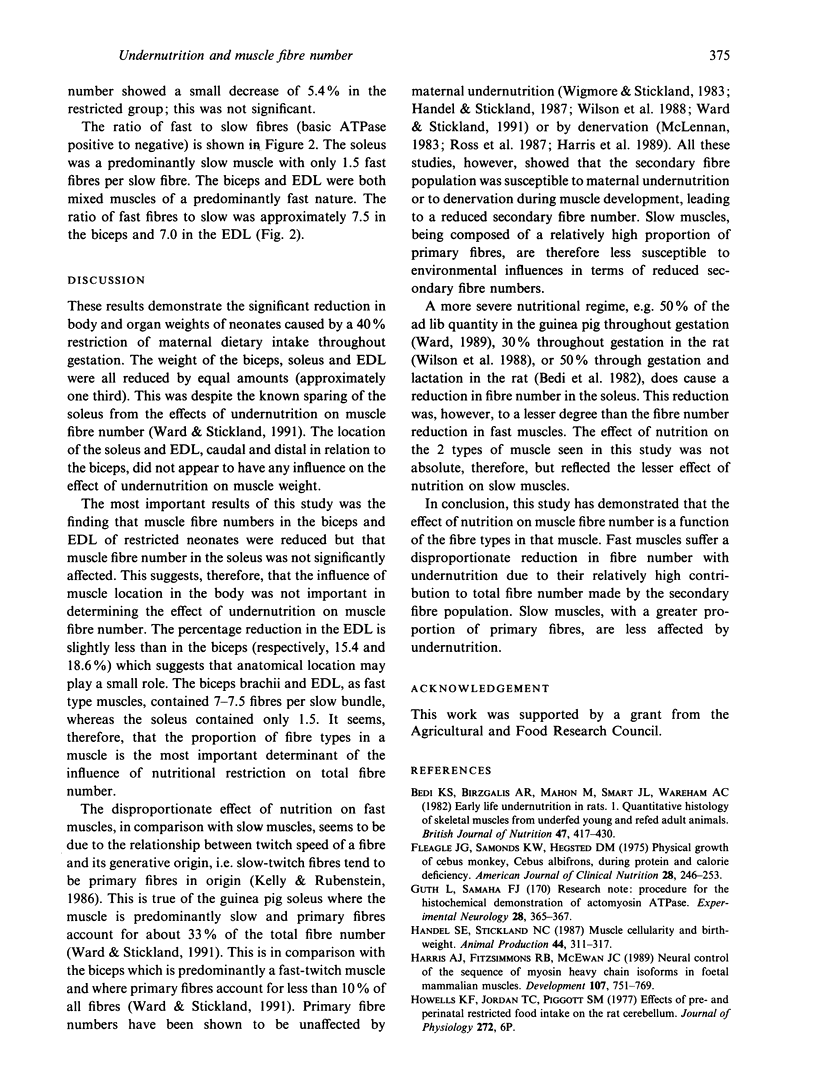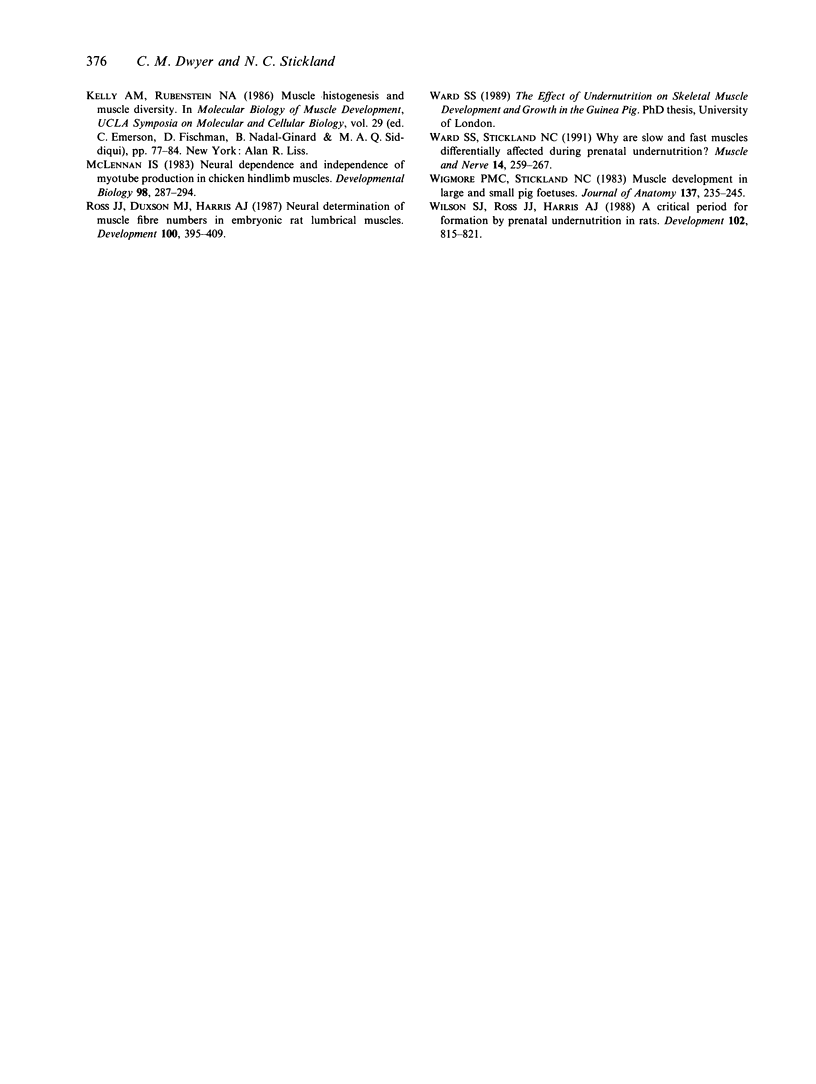Abstract
Nutritional restriction during muscle fibre number development invariably has a more detrimental effect on the biceps brachii than on the soleus. The difference may be due to the relative proportions of fibre types in the muscles or the anatomical location of the muscles. To distinguish between the effects of location and fibre type the biceps (fast, cranial and proximal), soleus (slow, caudal and distal), and extensor digitorum longus (EDL) (fast, caudal and distal) were examined from control and undernourished guinea pig neonates. A 40% reduction in maternal intake resulted in a reduction in neonate body and muscle weights (P < 0.005), biceps (P < 0.05) and EDL fibre numbers (P < 0.005), but did not affect soleus fibre number. At birth the ratio of fast fibres to slow was 7.5 for the biceps, 7.0 for the EDL, and 1.5 for the soleus. The effect of undernutrition on muscle fibre number therefore seems to be a function of the fibre types in that muscle.
Full text
PDF



Selected References
These references are in PubMed. This may not be the complete list of references from this article.
- Bedi K. S., Birzgalis A. R., Mahon M., Smart J. L., Wareham A. C. Early life undernutrition in rats. 1. Quantitative histology of skeletal muscles from underfed young and refed adult animals. Br J Nutr. 1982 May;47(3):417–431. doi: 10.1079/bjn19820053. [DOI] [PubMed] [Google Scholar]
- Fleagle J. G., Samonds K. W., Hegsted D. M. Physical growth of cebus monkeys, Cebus albifrons, during protein or calorie deficiency. Am J Clin Nutr. 1975 Mar;28(3):246–253. doi: 10.1093/ajcn/28.3.246. [DOI] [PubMed] [Google Scholar]
- Harris A. J., Fitzsimons R. B., McEwan J. C. Neural control of the sequence of expression of myosin heavy chain isoforms in foetal mammalian muscles. Development. 1989 Dec;107(4):751–769. doi: 10.1242/dev.107.4.751. [DOI] [PubMed] [Google Scholar]
- Howells K. F., Jordan T. C., Piggott S. M. Effects of pre- and perinatal restricted food intake on the rat cerebellum [proceedings]. J Physiol. 1977 Oct;272(1):6P–7P. [PubMed] [Google Scholar]
- McLennan I. S. Neural dependence and independence of myotube production in chicken hindlimb muscles. Dev Biol. 1983 Aug;98(2):287–294. doi: 10.1016/0012-1606(83)90359-7. [DOI] [PubMed] [Google Scholar]
- Ross J. J., Duxson M. J., Harris A. J. Neural determination of muscle fibre numbers in embryonic rat lumbrical muscles. Development. 1987 Jul;100(3):395–409. doi: 10.1242/dev.100.3.395. [DOI] [PubMed] [Google Scholar]
- Ward S. S., Stickland N. C. Why are slow and fast muscles differentially affected during prenatal undernutrition? Muscle Nerve. 1991 Mar;14(3):259–267. doi: 10.1002/mus.880140310. [DOI] [PubMed] [Google Scholar]
- Wigmore P. M., Stickland N. C. Muscle development in large and small pig fetuses. J Anat. 1983 Sep;137(Pt 2):235–245. [PMC free article] [PubMed] [Google Scholar]
- Wilson S. J., Ross J. J., Harris A. J. A critical period for formation of secondary myotubes defined by prenatal undernourishment in rats. Development. 1988 Apr;102(4):815–821. doi: 10.1242/dev.102.4.815. [DOI] [PubMed] [Google Scholar]


